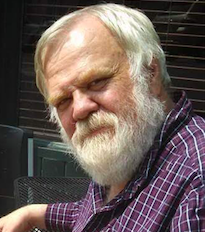
Six years ago, I took on a teaching job at the University of North Dakota, where I had first encountered inverted pyramids, “nut grafs” and the AP Stylebook in the late 1960s. What had been the Department of Journalism then is now the Department of Communication, and the curriculum leans more to public relations, advertising and communication theory than to news reporting, writing and editing.
Still, I am surprised and a little disappointed each semester when students in my news writing classes introduce themselves and say they’re majoring in marketing, management, aviation, air traffic management, Spanish, English, geography, computer science, wildlife biology, engineering or public health, to cite examples from the current semester. Few have any interest in the news business, including those who have declared a communications major.
OK, I tell them. So let’s concentrate on writing. If I can help you learn to write a sentence with clarity, substance and maybe a little style, that will help you enormously no matter what profession you may choose. (A professor in our business school told me that a frequent lament from returning business graduates is, “I wish I had learned to write better.”) And, I tell my students, along the way I’ll try to persuade you that as citizens you really ought to pay attention to the news and appreciate how it is reported, verified and written by news professionals.
The foundation of effective writing
About clarity.
It would be presumptuous of me to suggest much if any of the writing guidance I offer students today is original. I’ve had many fine teachers over the years — E.B. White, William Zinser and Roy Peter Clark, for example — and colleagues and competitors to admire and emulate, including Larry Batson at the Star Tribune and Jacqui Banaszynski wherever she happened to be. They have taught me about concrete nouns, active verbs, telling details, one idea to a sentence, tone and voice, and the enduring importance of story.
And this: “Clarity is the goal. Simplicity is the way to achieve it.”
I believe it was the late Charles McDowell, then a political writer and columnist at the Richmond Times-Dispatch, who offered that wisdom during a seminar for city editors at the American Press Institute in Reston, Va., in the mid-1980s.
Simplicity does not mean simplemindedness or “dumbing down” to a third grade level. What Charlie meant by “simple” was writing that relies on clear statements of fact, sincere and natural, free of deceit or pretentiousness. Simplicity can be elegant and eloquent – and understood.
Think about times you’ve been out riding in unfamiliar country and you stop and ask for directions. The local you ask may give you what he believes are perfect directions, but he has the advantage of “seeing” the route in his mind. The more complex his directions, chances are they’re less likely to get you where you want to go.
News writing often fails the same way. You know what you meant to say – it was clear in your head – but the reader can’t read your mind. That disconnect is what leads us to write sentences that don’t say exactly what we mean: “Walking down Fifth Avenue, the Empire State Building impresses visitors to New York.” I’ve forgotten where I heard this sentence, allegedly part of a story about an explosion and fire at a Minnesota prison: “One prisoner was thrown from his cell by the explosion in his pajamas.” Maybe it happened that way – and part of me wants to believe it — but I don’t think so.
Jargon and what we used to call “journalese” also lead to failures of communication. We employ jargon (especially in police, education and other beats) because we’ve heard it enough from sources that we start thinking and writing in their language. “Revenue enhancements” for taxes? And journalese … writing sentences that nobody would ever speak: “My sister Thursday unveiled her plans to wed.” Congratulations, I think.
Students and beginning journalists tend to use big, unusual words, hoping to impress but more often irritating editors — and distracting readers. By all means, use metaphor and other literary devices in your writing, but to clarify meaning, not just to show off.
One of the early assignments I give students is to write a thank-you note to someone. I give them each a note, envelope and postage stamp. I don’t read the notes, but I have to advise a few students how to address their letters and where the stamp goes, as this is a first for some.
My purpose is to get them to focus on clarity through simplicity: Think about audience, message and tone before you write anything. To whom are you writing? What do you want to say? And how do you want to say it so your message is understood?
It’s an idea I borrowed, not to say stole, from a post on Nieman Storyboard. Feel free to use it.


